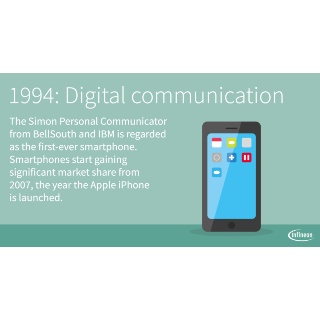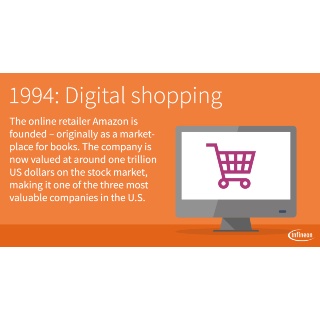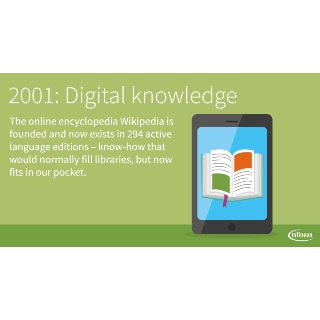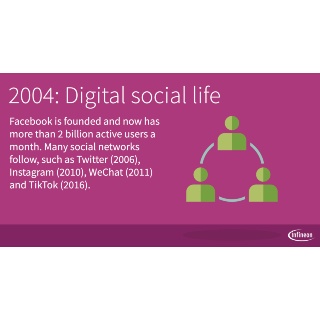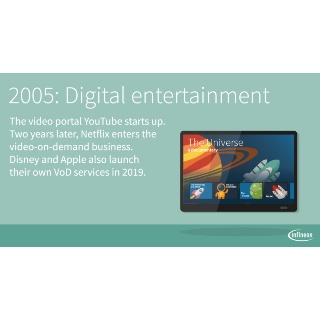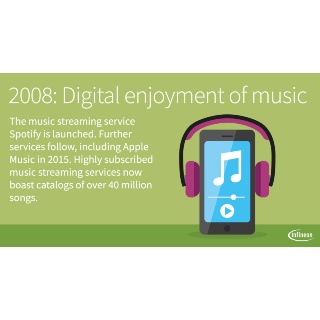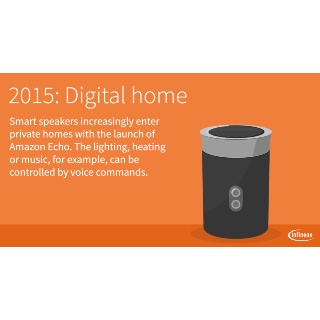
Digital transformation is proceeding apace. How is it changing our lives?
Instead of putting a record or CD on, we stream millions of songs on our smartphone. Instead of pressing switches, we control the living room lamp from a tablet. And we can access the sum of all human knowledge over the Internet – know-how that would normally fill libraries, but now fits in our pocket. We could hardly have imagined 30 years ago how we would live today in the age of digital transformation.

Shopping, banking and dating: These everyday things are also digitalized and tailored to our preferences. The changes in the world of work have been no less sweeping. Factories are connected via the Internet of Things, while robots work hand in hand with humans. And offices are also becoming smarter: The heating is turned down automatically when there are a large number of employees in the room, for instance.
All that can be grouped under the term “digital transformation.” This process of change is in full swing. Studies assume that while there are currently some 27 billion connected devices, this figure will increase to around 75 billion in 2025 – and that includes not only smartphones, but also household objects and cars. Another term on many people’s lips is therefore the Internet of Things (IoT), an important subdomain of digital transformation.
Since today’s mobile network would collapse under the rising flood of data, new technologies are breaking into the market, including wireless standards such as 5G and narrowband IoT. The pace at which these standards become established will have a substantial impact on digital transformation as it moves ahead.

Are digital transformation and digitization the same?
No. By definition, digitization merely means that analog information is translated into bits and bytes. However, the term “digital transformation” covers far-reaching changes in how we live and work. The terms are often used as synonyms in common parlance, with digitization frequently meaning the entire process of transformation and cultural change.
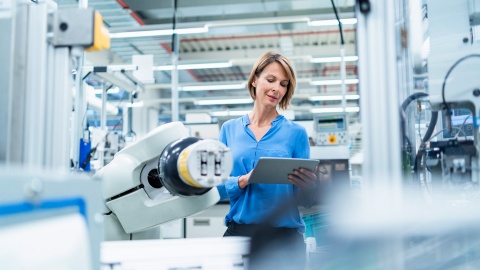
What opportunities does digital transformation hold out?
Digital transformation offers the economy new opportunities to grow. While factories used to make the same product thousands of times over, cars and other products are now be tailored inexpensively to the customer’s wishes. Such personalization is possible because not only are robots, machines and systems connected to each other, but also companies. Connectivity speeds up communication and allows processes to be synchronized. The Federation of German Industries (BDI) estimates that if industry steers digital transformation in the right direction, there is the potential for it to create an extra 425 billion euros in value added in Germany by 2025 – and up to 1.25 trillion euros throughout Europe.

But is digital transformation only about maximizing economic growth? No, digital transformation also improves the quality of life. Digital technologies help give the elderly greater independence and security. Smart watches remind them when they need to take their medication, for example. And connected sensors on the ceiling detect if they fall and then alert the emergency services automatically if necessary. Digital transformation also eliminates the need to go to public offices in person. Germany has committed itself by law to enable citizens to provide supporting documents and meet their reporting obligations to central government, the federal states and municipalities online as of 2022.
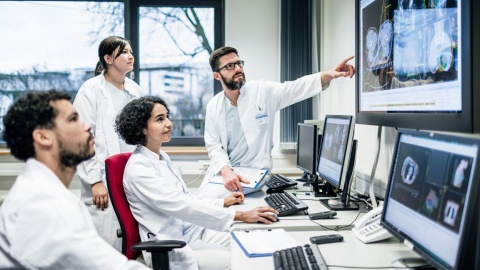
Digital transformation harbors risks if there is no cybersecurity
Yet digital transformation also has its downsides: Now that billions of devices are connected to the Internet, there are more means of infiltration for cybercriminals. Some residents install connected cameras in their rooms so that they can use their smartphone to check that everything is fine at home when they are out. But if there is an inadequate level of security, there is the risk that attackers can then access the cameras to prepare a burglary or record videos from occupants’ private sphere in order to blackmail them.
Hospitals also have to contend with cybercrime. If patients’ data is filed on an IT system instead of in paper form, cybersecurity is a fundamental necessity. Otherwise, attackers can view, change or encrypt such sensitive data in an unauthorized manner over the Internet. Consequently, physicians and nurses would no longer know which patient receives which drug and in what dose.
Industry has also been confronted with such challenges as more and more processes have become digitalized. According to the industry association Bitkom, 75% of businesses in Germany stated in 2019 that they had been affected by data theft, industrial espionage or sabotage in the previous two years – compared to a figure of just 53% in 2017. The result was damage and loss amounting to 102.9 billion euros. That’s a trend that can be seen worldwide. A study by the German insurer Allianz, which surveyed more than 2,700 risk experts from around 100 countries, reveals that cybercrime is now the biggest business risk for companies worldwide – ahead of tariffs, trade wars and sanctions.
It is important for the business community and policymakers to formulate concepts for cybersecurity in order to protect citizens and enterprises. Infineon supports these efforts with appropriate security solutions: Well over 350 million connected devices already use security controllers from the company to protect data and networks.
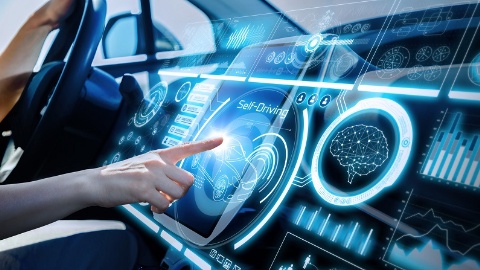
Autonomous cars are on the advance
Digital transformation is also entering the mobility sector, for example, in finding a place to park. Cities worldwide have recently begun equipping parking spaces with connected sensors. An app then directs drivers to empty spots. That’s digital transformation that also benefits the environment: Car owners no longer have to drive around looking for somewhere to park – a headache that increases the amount of traffic and CO2 emissions particularly in major cities.
Thanks to digital transformation, machines even take over the tasks of steering, accelerating and braking. Cars that drive autonomously are no longer a pipe dream. That’s shown by a look at the U.S. state of Arizona, where the company Waymo has put autonomous taxis on the road. A driver still has to be in the car for safety reasons, but the robotaxis already drive most of the way themselves. 3D cameras, radar and ultrasonic sensors that record the environment data are used to enable that. In conjunction with Internet services, such as the geodata service and navigation program HERE, the result is a sort of artificial means of perception that guides the car through the traffic. Experts use the term “advanced driver assistance systems” (ADAS) for that.
However, this type of connectivity also creates new security risks. After all, it’s conceivable for the cars to be cyberattacked and their functions manipulated. For example, indicators could be made to flash the wrong way. Cars might also be controlled remotely. Infineon is working with various partners to create suitable solutions to minimize that security risk. Hardware and software solutions attuned to each other cater for current and future security requirements.

Big data is impacting our lives
The term “big data” repeatedly crops up in connection with digital transformation. It denotes gigantic masses of data collected from various sources, in different formats and speeds, every day all over the world – in social networks, or when you shop online, make calls with your smartphone or pay by credit card. This data is a resource companies can use to find out how customers behave and what they want.
The quantities of data are enormous. That is why supercomputers, such as IBM Watson, and artificial intelligence are gaining in importance. They are able to analyze the mass of data and deduce recommendations. Today’s consumers take it almost for granted that advertising is tailored better to their purchase behavior.
Yet big data is not just about growth and personalization. It also benefits the health care system, for instance. Google started using big data technology some time ago to try and predict the spread of flu – calculated from millions of search queries relating to the subject of colds and runny noses.
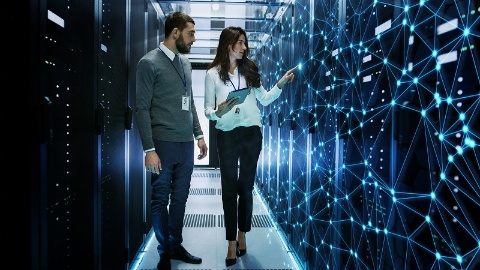
Environmental protection: Energy-efficient operation of data centers

The quantity of data will increase in the course of digital transformation and is expected to reach 163 zettabytes worldwide by 2025, according to a study by IDC and Seagate. A zettabyte is one billion terabytes, so 163 zettabytes are 163,000,000,000,000,000,000,000 bytes – a gigantic quantity of data that can be stored only if even more and bigger server farms are created worldwide.
The challenge: Large data centers guzzle up electricity. According to the Energy Agency NRW, the power required to run servers and data centers in Germany will be 16.4 billion kWh in 2025 – a figure that was just 10.5 billion kWh in 2010. By way of comparison: A two-person household in Germany living in an apartment building consumes an average of around 2,500 kWh of electricity a year. 16.4 billion kWh is therefore roughly equal to the annual consumption of 6.5 million two-person households.
Not only is storing data energy-intensive, but a lot of power is also needed to cool the servers. The reason for that: A great deal of waste heat is emitted when they are run, especially if inefficient converters are used.
Saving electricity is not only in the interest of operators. It also benefits the environment. To enable simpler and more efficient cooling, servers are therefore often located in colder regions. Microsoft even sank a server off the coast of Scotland as an experiment to use the cold water as a means of cooling. Energy-efficient semiconductors from Infineon ensure that the costs to supply power to these server farms are slashed further.
Another approach to enable efficient use of energy: Electricity meters can be connected to each other in the age of the Internet of Things and transformed into smart meters. They measure the consumption of the connections in the grid in real time, without the need for personnel to come and read them – a key requirement for a smart grid that optimally distributes the fluctuating amount of power generated from renewable energies.

Summary
It is very likely that digital transformation will continue to make important strides forward in the coming years and decades. We are talking about driverless cars on the highway. Or connected domestic robots that take over household chores for senior citizens and also communicate with physicians.
To ensure the success of a digitalized future, it’s crucial to get a handle on the downsides of digital transformation: the thirst for energy and cybercrime. Microelectronics in general, but in particular Infineon solutions that enhance energy efficiency and security, will play a decisive role in that.
It’s not just technological developments that will determine how far digital transformation will extend. A key factor will also be whether people see the new possibilities as progress and an enrichment, actively call for them and expand their own skills accordingly. Only then can new technologies enrich our economic and community life in a big way.
Last update: April 2020

